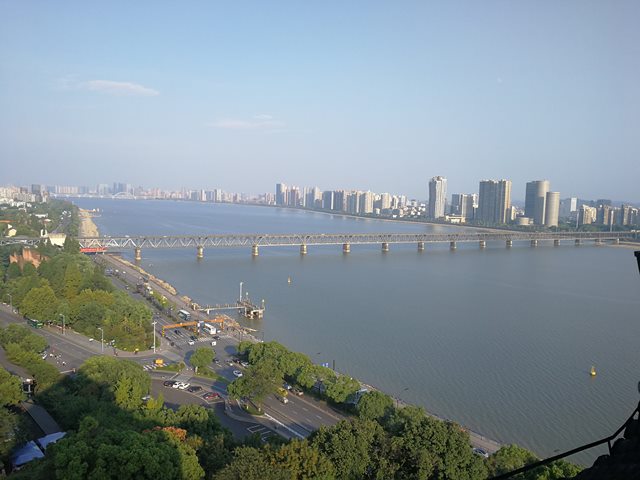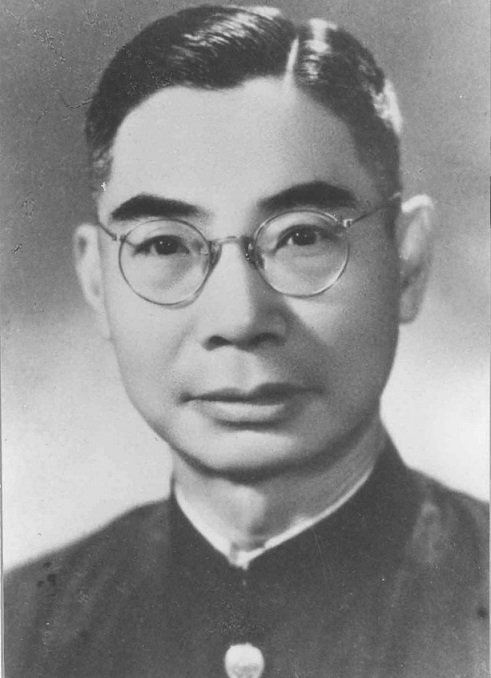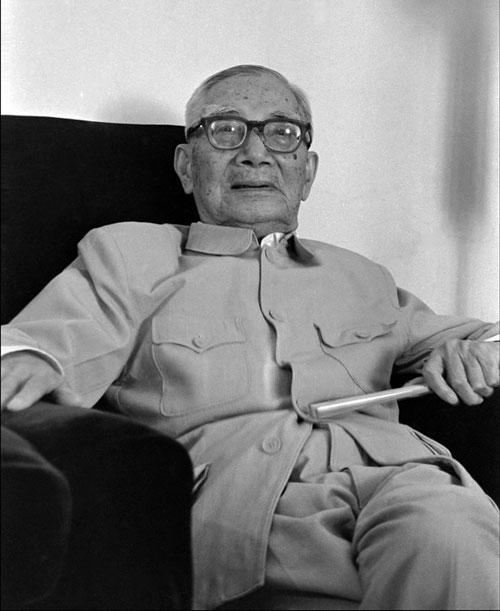We Recommend:
Bach Steel - Experts at historic truss bridge restoration.
BridgeHunter.com Phase 1 is released to the public! - Visit Now
钱塘江大桥 (Qiantang River Bridge)
钱江一桥 (Qianjiang Bridge)

Primary Photographer(s): Nathan Holth
Bridge Documented: October 5, 2017
Hupao Road (虎跑路), Jiangnan Avenue (江南大道), and Railroad Over Qiantang River (钱塘江)
Hangzhou (杭州): Shangcheng District (上城区) and Binjiang District (滨江区), Zhejiang (浙江): China (中国)
Metal 8 Panel Rivet-Connected Warren Deck Truss, Fixed and Approach Spans: Metal 8 Panel Solid Ribbed Spandrel Braced Deck Arch, Fixed
1937 By Builder/Contractor: Dorman Long of Middlesbrough, England and Engineer/Design: Mao Yisheng (茅以升)
1953
220.0 Feet (67.1 Meters)
3,517.0 Feet (1072 Meters)
Not Available
16 Main Span(s)
Not Applicable

View Information About HSR Ratings
Bridge Documentation
Coordinates in Bridge Browser follow the global standard (no offset). Coordinates using Chinese system are: 30.193110,120.139120
The Qiantang River Bridge (钱塘江大桥) is located in Hangzhou, China and was opened September 26, 1937. The bridge was designed by Chinese engineer Mao Yisheng (茅以升). Mao (1896-1989) graduated from China's Tangshan Engineering College in 1916. He continued his education in the United States, receiving his Master's degree of civil engineering from Cornell University in 1917 and then went on to earn the first PhD ever granted by the Carnegie Institute of Technology in Pittsburgh (now Carnegie Mellon University) in 1921. He is noteworthy in Carnegie Mellon history as the first PhD graduate, and there is a statue of him on campus today, next to a plaque showing the Qiantang River Bridge as well. During his time in America, he also worked for the famous bridge company McClintic Marshall.


Above: Photos of Mao Yisheng (茅以升) in his earlier and later years.
The Qiantang River Bridge carries railroad traffic on a lower deck and highway/pedestrian traffic on the upper deck. The main spans are rivet-connected Warren deck truss spans, and there are also steel arch approach spans. It was the first combined highway and railroad bridge in China, and also reportedly the longest railroad bridge in China as well when completed. The bridge was also notable as the first modern steel bridge designed by a Chinese engineer without foreign assistance. Some of the actual construction did involve at least one foreign company however: the noteworthy English steel mill and bridge contractor Dorman Long was involved with the construction phase. The bridge is 3,517 feet long, and has 16 main spans, plus a number of approach spans. In 2006, the bridge was designated as a "key cultural relic" recognizing the bridge's historic significance. The below historical photo shows the construction of the bridge. The truss spans were assembled some distance from the bridge and floated into place as shown in the photo.

Only a few months after the Qiantang River Bridge was opened, a portion of the bridge was destroyed by the Chinese (ironically under Mao Yisheng's direction) to stop the advance of Japanese troops during the Battle of Shanghai. Mao Yisheng oversaw the reconstruction of the bridge after the war, and the bridge reopened to traffic in 1953. The below photo shows the bridge after the destruction, with the Liuhe (Six Harmonies) Pagoda (六和塔) in the foreground. The pagoda remains today and is an excellent place to view the bridge.

Mao Yisheng established himself as one of the most important bridge engineers in China with the completion of this bridge. Despite not formally becoming a member of the Communist Party until 1987, he was retained in his role as a bridge engineer in the new government after 1949 due to his invaluable expertise. He oversaw the design of many large bridges in China. The Qiantang River Bridge in Hangzhou and the 1957 Yangtze River Bridge in Wuhan are his two most famous bridges.

Above: Mao Yisheng (right) meets Chairman Mao Zedong (left).
This bridge is tagged with the following special condition(s): Double-Deck
![]()
Photo Galleries and Videos: 钱塘江大桥 (Qiantang River Bridge)
Bridge Photo-Documentation
Original / Full Size PhotosA collection of overview and detail photos. This gallery offers photos in the highest available resolution and file size in a touch-friendly popup viewer.
Alternatively, Browse Without Using Viewer
![]()
Bridge Photo-Documentation
Mobile Optimized PhotosA collection of overview and detail photos. This gallery features data-friendly, fast-loading photos in a touch-friendly popup viewer.
Alternatively, Browse Without Using Viewer
![]()
Maps and Links: 钱塘江大桥 (Qiantang River Bridge)
Coordinates (Latitude, Longitude):
Search For Additional Bridge Listings:
Additional Maps:
Google Streetview (If Available)
GeoHack (Additional Links and Coordinates)
Apple Maps (Via DuckDuckGo Search)
Apple Maps (Apple devices only)
Android: Open Location In Your Map or GPS App
Flickr Gallery (Find Nearby Photos)
Wikimedia Commons (Find Nearby Photos)
Directions Via Sygic For Android
Directions Via Sygic For iOS and Android Dolphin Browser

